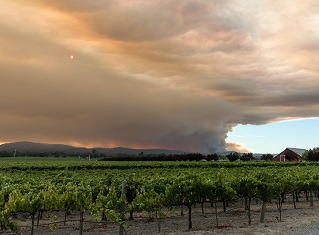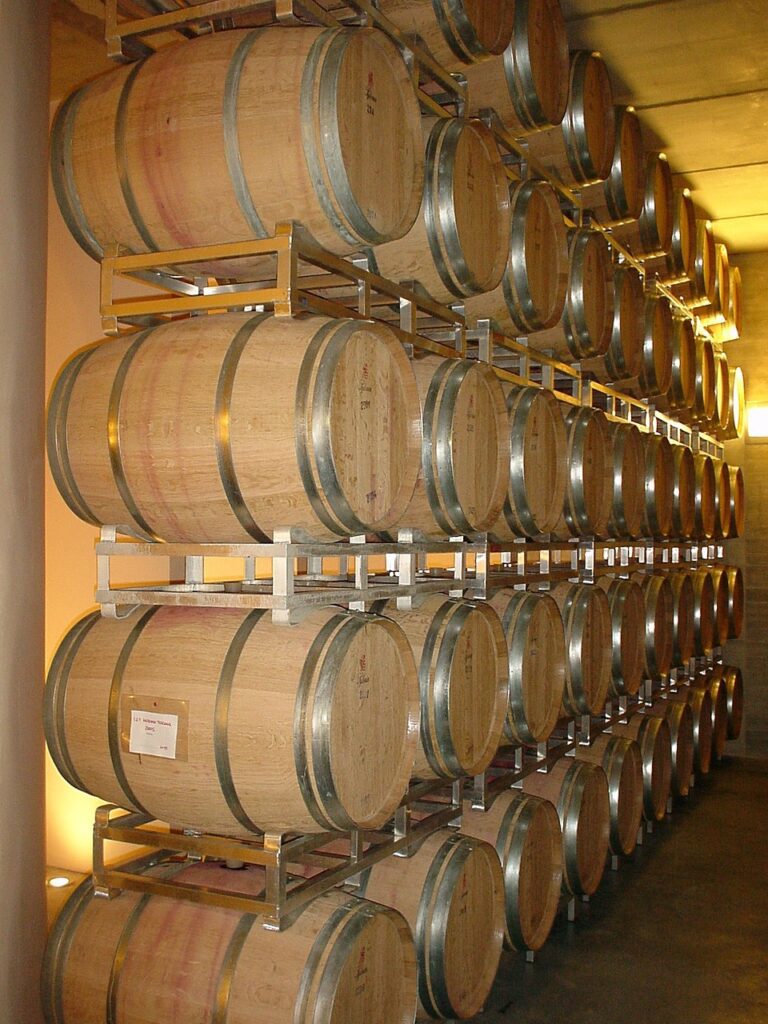Veld fires caused serious damage in some of the Australian and Californian wine regions over recent years. Although not in the same magnitude, the problem has also occurred in South Africa. Winemakers must consequently ensure that they have the latest information to address the problem.
The challenge in the treatment of wines spoiled by smoke is to ascertain which compounds are responsible and to what extent it must be removed, without damaging the sensory composition of the wine. Wood maturation can for example contribute to some of these compounds and must not be removed completely. Some of the compounds are also associated with Brettanomyces spoilage. It is thus important that the sensory threshold concentrations of such compounds are known.
Some of the compounds that cause the smoke spoilage of grapes are indicated in Table 1.

AWRI (Australian Wine Research Institute) research indicated that most consumers dislike the compounds contained by smoke-tainted wines. A potential problem solution is the blending of the wine to a level below the observation value of the specific compound(s). It was however found that a Pinot noir rosé blend, containing more than 6.25% tainted wine blend, can still be detected by consumers.
Methods to remove the negative compounds were investigated before and after harvesting, and before and after alcoholic fermentation. Smoke spoilage compounds can result at different stages and from different sources during winemaking. Guaiacols can for example also be formed by some spoilage yeasts. If free guaiacols are removed before bottling, a wine can still exhibit spoilage thereafter if bound guaiacols are hydrolysed up to five years after bottling. The formation of smoke taint compounds on or in grapes have different causes. Its transfer into the resulting juice is also possible. The physiological and phenological stages of the vine, when it is exposed to smoke, determine the extent of spoilage. The potential of the uptake of taint compounds increases significantly during veraison. The spoilage compounds can be toxic to the vine and if present during veraison, the uptake of the vine is significant.
In order to limit the toxicity of the compounds, the vine sequesters the compounds by forming glycosylated compounds. Veld fires occurring in the early season can deposit ash, which remain dormant until veraison, but will be absorbed by the vine. If glycosylase enzymes are afterwards used during winemaking, the glycosylated compounds can be hydrolysed and the spoilage compounds can be observed. Although the magnitude of this occurrence is not significant, it confirms that winemakers need to be informed about the potential liberation of spoilage compounds. Viticulturists should also be aware of the evaluation of smoke-exposed vineyards to identify potential post-harvest vineyard practices. The magnitude of smoke exposure will influence the decision making regarding potential reactive actions. Analyses of the spoilage compounds are however expensive (USD 150 to 250 per sample), complex and not always available.
Wine spoiled by smoke is not only a quality problem, but can also cause considerable financial losses. The potential solution to the problem is consequently of cardinal importance. Specific vineyard practices are the first step that can be implemented. It entails amongst other things the following:
- Grapes can be treated with kaolin.
- Foreign material other than grapes (MOG) must be limited.
- Grapes must rather be handpicked.
- Grapes must be cooled to 10°C if possible.
After grapes have been delivered at the cellar, different actions can also be implemented. This includes specific fermentation protocols, separation of the press fraction, removal of spoilage compounds and blending. Potential problem wines must be sold as soon as possible, because the spoilage compounds can become more evident during maturation. Winemakers have to make certain decisions regarding the handling of smoke-spoiled grapes and wine. Less than 100 out of thousands of compounds, which occur in wine, are associated with this spoilage. Structurally some of these compounds are the same as desirable wine compounds.
Glycosides occur generally in wine and act as reservoirs for non-aromatic compounds, which can over time set aromatic compounds and glucose free. If this release is not floral compounds, the wine is unacceptable. Vines however use a protection mechanism to prevent the toxicity of the free spoilage compounds through sequestering of the free compounds.
Wines that can potentially exhibit smoke spoilage can be treated in different ways. The magnitude of exposure will influence the decision making. Grapes with much exposure must preferably be whole bunch pressed. The duration of juice contact with undissolved grape material must be limited to prevent the dissolving of smoke spoilage compounds in the juice. Free-run fractions must preferably be separated from press fractions.
Research on the influence of fining agents on the removal of smoke spoilage compounds from wine found that only activated carbon and synthetic mineral products decrease the concentration of the compounds, as opposed to egg albumen, K-caseinate, isinglass, bentonite, PVPP, gelatine and yeast cell walls. Different activated charcoal products however differ regarding their influence. Activated charcoal products were developed to selectively remove the phenolic compounds that are associated with smoke spoilage, from juice. One of these products is also more effective to remove 4-ethylphenol and 4-ethylguaiacol from wine.
If only the free smoke spoilage compounds have to be removed, the solution is much easier. The phenols that are however bound as glycol-compounds and are only released at a later stage, must also be removed. Different companies developed equipment for that purpose. It comprises the use of membrane equipment to separate the compounds using their molecular weight. The application of different combinations of differential filtration, ultrafiltration and membrane separation is required for this process. Spinning cone equipment can also be used to remove bound smoke spoilage compounds from wine (Carey, 2021).
Flash détente is a technique to extract more colour and tannins from red grapes. It consequently contributes to a fuller structure of the wine. It is suspected that it can diminish the perceptibility of smoke spoilage. The possibility however also consists that the increased temperature can cause the increased extraction of more smoke spoilage compounds. A trial with Cabernet Sauvignon indicated the following:
- The concentration of free guaiacols was diminished by a 53% average.
- The concentration of total guaiacols was however diminished by only 12%. The total guaiacol concentration was consequently not increased by it.
- The aroma of treated wine was improved, but the smoke taint was not removed completely.
- More emphasis should be placed on the diminishing of the bound guaiacols. (Lasky, 2021.)

Smoke in vineyard.
References
Carey, R., 2021. Grapes, wine and smoke taint. Wine Business Monthly, January 2021: 98 – 110.
Lasky, M.S., 2021. Winemaker trial: Flash détente as a mitigation technique for smoke-exposed grapes. Wine Business Monthly, January 2021: 112 – 115.













